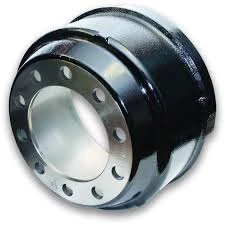brake drum pdf
Understanding Brake Drums A Key Component in Automotive Braking Systems
Brake drums are a crucial component of many vehicle braking systems, particularly in older models and certain types of trucks and buses. They play a vital role in ensuring the safety and effectiveness of the vehicle's braking performance. This article explores the function, design, maintenance, and advancements in brake drum technology.
What is a Brake Drum?
A brake drum is a cylindrical component that is attached to a vehicle wheel. It is part of the drum brake system, where brake shoes press against the inner surface of the drum to create friction and slow down or stop the vehicle. When the driver presses the brake pedal, hydraulic force is applied, causing the brake shoes to expand and push against the drum's inner surface. This action generates the necessary friction to decelerate the vehicle.
Function and Mechanism
The primary function of the brake drum is to provide a surface against which the brake shoes can grip. The design of the drum is critical, as it must withstand the heat generated during braking without warping or cracking. Brake drums are typically made from iron or aluminum alloys, chosen for their strength and heat-dissipating properties.
In conventional drum brakes, the drum rotates along with the wheel, and when the brake is applied, the brake shoes are forced outward against the inner surface of the drum. This action creates friction, which converts the vehicle's kinetic energy into heat, effectively slowing down the vehicle. The design allows for efficient braking, and the system can be compact, making it suitable for various vehicle types.
Advantages of Drum Brakes
Brake drums offer several advantages over disc brakes, including
1. Cost-Effectiveness Drum brakes tend to be less expensive to manufacture and install, making them a popular choice for budget-conscious vehicle production.
2. Effective Parking Brake Drum brake systems can be easily adapted to provide an effective parking brake mechanism, as they can engage simply by mechanically holding the brake shoes in place.
brake drum pdf

3. Uniform Wear Brake drums can provide more uniform wear on the brake shoes compared to disc brakes, which can sometimes wear unevenly, affecting performance and safety.
4. Higher Heat Capacity In certain conditions, drum brakes can manage heat generation better due to their larger surface area, which helps dissipate heat more effectively.
Maintenance of Brake Drums
Proper maintenance of brake drums is essential to ensure optimal performance and safety. Regular inspections are crucial to check for signs of wear, such as uneven surfaces, grooves, or cracks. It is advisable to replace the brake drums or shoes according to the manufacturer’s specifications, typically rotating them every 20,000 to 60,000 miles, depending on driving conditions and habits.
During maintenance, technicians should ensure that the drum’s surface is smooth and free from contaminants. A rough or contaminated surface can lead to reduced braking efficiency and increased wear on the brake shoes. Additionally, lubrication of pivot points and adjustments to the brake shoes can enhance braking performance and extend the lifespan of the components.
Advances in Brake Drum Technology
Recent advancements in automotive technology have also influenced brake drum design. Manufacturers are exploring new materials, such as composite materials, which can reduce weight and improve heat dissipation. Modern brake drums may also incorporate design features that enhance cooling or improve air circulation, leading to better braking performance and longevity.
Moreover, the integration of electronic controls into braking systems has paved the way for advanced applications, such as anti-lock braking systems (ABS) and electronic stability control (ESC). These technologies work in harmony with traditional drum brakes to provide enhanced vehicle safety and performance.
Conclusion
Brake drums, while sometimes overshadowed by disc brakes in modern vehicle design, remain a crucial element in many braking systems. Understanding their function, maintenance, and advancements helps vehicle owners appreciate the importance of this component in ensuring safe driving conditions. Regular inspection and proper care of brake drums can significantly enhance a vehicle's braking performance, underscoring the significance of this vital automotive part. As technology continues to evolve, so too will the design and capabilities of brake drums, ensuring they meet the demands of modern driving.
-
The Power and Reliability of Brake DrumsNijsAug.27,2025
-
The High-Quality Truck Brake DrumsNijsAug.27,2025
-
Quality Brake Drums for Reliable PerformanceNijsAug.27,2025
-
Get the Quality Semi Trailer Brake Drums for Your FleetNijsAug.27,2025
-
Everything You Need to Know About Brake DrumsNijsAug.27,2025
-
Enhance Your Vehicle's Performance with Reliable Brake DrumsNijsAug.27,2025
-
Truck Drum Brake Spring Replacement ProcedureNijsAug.22,2025


